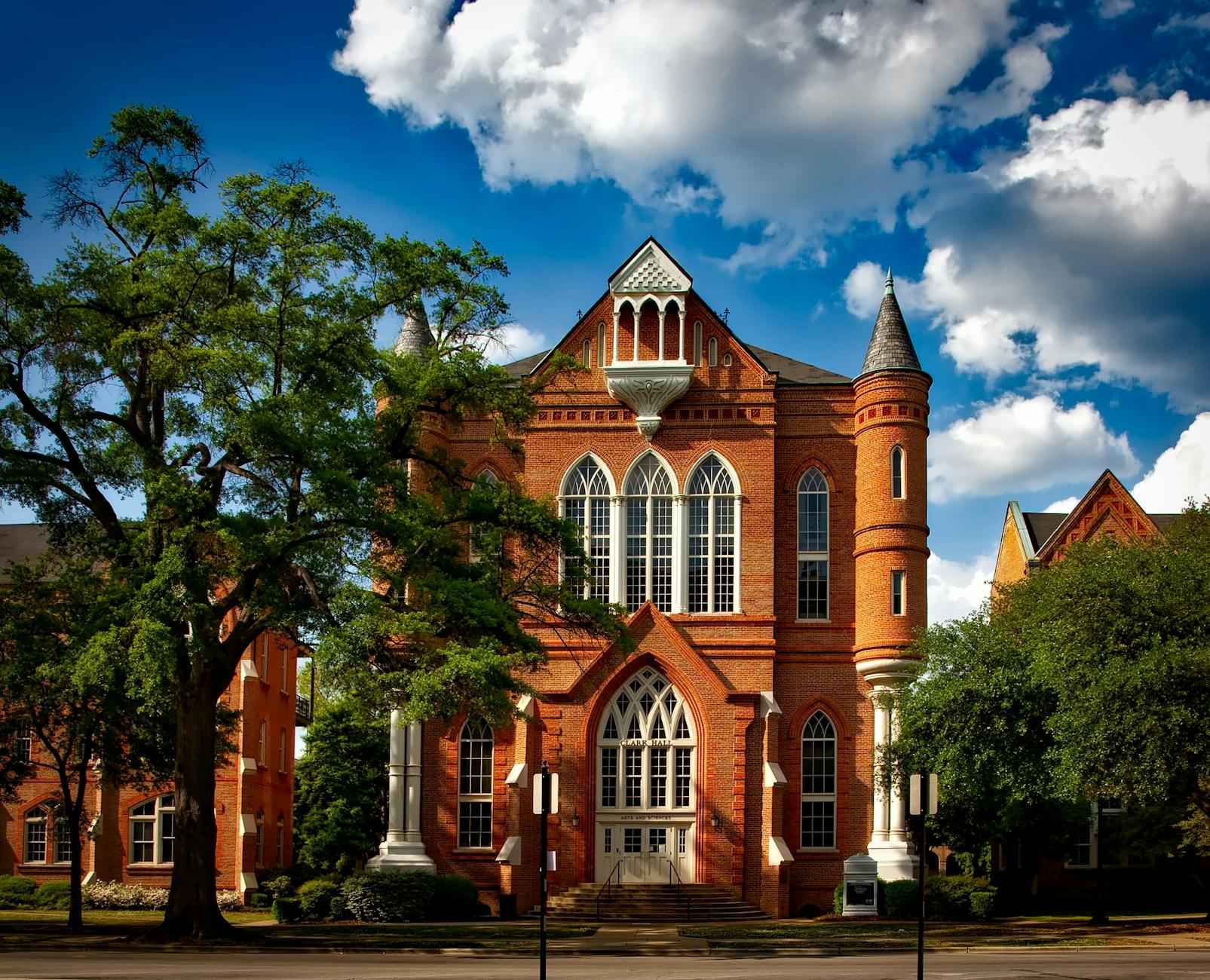This article delves into the 251 area code, shedding light on its geographic coverage, historical significance, and its impact on local communication. Prepare to discover some surprising facts about this intriguing area code that serves the vibrant communities of southwestern Alabama.
Understanding the 251 Area Code
The 251 area code is a North American telephone area code that was established to serve specific regions in Alabama. It was created as a result of the growing demand for telephone numbers in the area, reflecting the population’s expansion and the need for improved communication infrastructure. The area code covers a diverse range of communities, each contributing to the rich tapestry of life in the region.
Geographic Coverage of the 251 Area Code
The 251 area code primarily serves the southwestern part of Alabama, encompassing a variety of cities and towns. This section will provide a detailed overview of the geographic coverage, highlighting key locations and their unique characteristics.
- Mobile – The largest city in the area code, known for its rich history and cultural significance.
- Daphne – A rapidly growing suburb that boasts a family-friendly atmosphere.
- Fairhope – Famous for its picturesque downtown and artsy vibe.
- Bay Minette – A small town with a strong sense of community and local charm.
Major Cities in the 251 Area Code
The major cities within the 251 area code include Mobile and Daphne, each playing a crucial role in the local economy and culture. Mobile, as the largest city, is a hub for commerce and tourism, while Daphne offers a suburban lifestyle that attracts families and newcomers.
Mobile: The Largest City
Mobile is not just the largest city in the 251 area code; it is also a historical gem. Known for its vibrant festivals, including Mardi Gras, Mobile has a rich cultural heritage that attracts visitors from all over. The city’s economy is diverse, with key sectors including shipping, aerospace, and healthcare.
Daphne: A Growing Suburb
Daphne has experienced significant growth in recent years, transforming from a small town into a bustling suburb. This growth is attributed to its excellent schools, parks, and community events, making it an attractive place for families. The city’s strategic location near Mobile allows residents to enjoy the benefits of urban living while maintaining a small-town feel.
Rural Areas and Smaller Towns
Beyond the major cities, the 251 area code encompasses several rural areas and smaller towns that contribute to the region’s character. These communities often have rich histories and unique local traditions that enhance the cultural landscape of southwestern Alabama.
History of the 251 Area Code
The 251 area code was established in 2001, emerging from the need for more telephone numbers as the population grew. Its creation marked a significant milestone in local telecommunications, reflecting the technological advancements and increasing demand for communication services.
Establishment of the 251 Area Code
Originally, the region was served by the 334 area code. However, as the population surged, it became clear that a new area code was necessary to accommodate the growing number of residents and businesses. The split from the 334 area code allowed for a more efficient numbering system and improved service for local users.
Changes Over the Years
Since its inception, the 251 area code has seen various changes, including adjustments in numbering plans to accommodate new technologies. The rise of mobile phones has also influenced how area codes are utilized, leading to more flexible communication options for residents.
How the 251 Area Code Affects Local Businesses
The presence of the 251 area code has significant implications for local businesses. It influences how businesses market themselves and connect with customers, playing a vital role in shaping the local economy.
Marketing Strategies for Local Businesses
Businesses in the 251 area code often tailor their marketing strategies to resonate with the local audience. Utilizing the area code in their contact information can enhance customer engagement and foster a sense of community trust.
Customer Perceptions and Trust
Having a local area code can significantly impact customer perceptions. Many consumers feel more comfortable engaging with businesses that share their area code, as it fosters a sense of familiarity and trust.
Telecommunications Providers in the 251 Area Code
Several telecommunications providers serve the 251 area code, offering a range of services to residents and businesses. This section reviews the major players in the market and their offerings.
Major Telecom Companies
Major telecom companies in the 251 area code include AT&T, Verizon, and local providers that cater specifically to the needs of the community. These companies offer various services, from traditional landlines to high-speed internet and mobile plans.
Emerging Technologies and Services
As technology evolves, so do the services available to residents in the 251 area code. New advancements, such as fiber-optic internet and enhanced mobile services, are becoming increasingly accessible, improving the overall communication landscape.
Future of the 251 Area Code
The future of the 251 area code is a topic of interest as population growth and technological advancements continue to shape the region. This section speculates on potential changes and developments that may arise in the coming years.
Population Growth Projections
With ongoing development in the region, population growth is expected to continue. Projections indicate that the demand for telephone services will increase, potentially leading to further changes in the area code structure.
Technological Advancements and Area Codes
As technology progresses, area codes may evolve to accommodate new communication methods. The impact of advancements in telecommunications could lead to a re-evaluation of how area codes are assigned and utilized in the future.

Understanding the 251 Area Code
The 251 area code is a significant part of the North American telephone numbering plan, primarily serving the southwestern region of Alabama. Established in 2001, this area code emerged from a split of the 334 area code, reflecting the growing demand for telephone services in the area. In this section, we will explore the origins of the 251 area code, the specific regions it encompasses, and its overall significance in the realm of telecommunications.
The 251 area code is not just a number; it represents a vibrant community and a rich tapestry of culture and history. Covering a diverse range of locations, this area code includes major cities, suburban areas, and rural communities. The introduction of the 251 area code was a response to the increasing population and the need for more telephone numbers to accommodate the growing number of residents and businesses.
When the 251 area code was created, it was designed to enhance local communication by providing residents and businesses with a unique identifier. This area code serves a variety of regions, including:
- Mobile – The largest city in the area, known for its rich maritime history.
- Daphne – A rapidly growing suburb of Mobile, offering a blend of residential and commercial opportunities.
- Fairhope – Famous for its charming downtown and art scene, this town attracts many visitors.
- Bay Minette – A smaller town with a strong sense of community and local heritage.
The significance of the 251 area code extends beyond geographic boundaries; it plays a crucial role in local businesses and community identity. For instance, businesses that use the 251 area code are often perceived as more trustworthy and reliable by local customers, fostering a sense of community connection.
The geographic coverage of the 251 area code includes a variety of landscapes, from bustling urban centers to serene rural areas. This section will delve deeper into the specific cities and towns served by the 251 area code, highlighting their unique characteristics and contributions to the region.
In total, the 251 area code covers several counties, including:
- Baldwin County
- Mobile County
- Escambia County
Each of these counties hosts a range of communities that contribute to the cultural and economic fabric of Alabama. For example, Mobile is not only the largest city but also a historical hub, known for its role in the shipping industry and vibrant festivals, such as Mardi Gras. Meanwhile, Baldwin County is renowned for its beautiful beaches and tourism, making it a popular destination for visitors and residents alike.
The establishment of the 251 area code had profound implications for local communication and business operations. With the growth of mobile technology, the need for a distinct area code became essential for accommodating the influx of new phone numbers. This change allowed for more efficient routing of calls and better service for residents.
Moreover, the 251 area code has become a symbol of local pride. Residents often feel a sense of belonging and identity tied to their area code, which can influence social dynamics and community engagement. Local businesses leverage this connection in their marketing strategies, using the area code to foster trust and loyalty among customers.
In summary, the 251 area code is more than just a telephone number; it represents a vital part of Alabama’s identity, reflecting its history, culture, and economic landscape. Understanding the significance of this area code helps to appreciate the interconnectedness of communication and community in today’s world.

Geographic Coverage of the 251 Area Code
The 251 area code is an essential part of the telecommunications landscape in Alabama, primarily covering the southwestern region of the state. This area code was established to meet the growing communication needs of the local population and businesses. It encompasses a variety of cities and towns, each with its unique characteristics and contributions to the region’s culture and economy.
- Mobile
- Daphne
- Fairhope
- Bay Minette
- Foley
- Gulf Shores
- Orange Beach
Mobile is the largest city within the 251 area code, serving as a vital economic and cultural hub. Known for its rich history, Mobile is home to numerous attractions, including the historic USS Alabama Battleship Memorial Park and the vibrant Mardi Gras celebrations. The city boasts a diverse population and a robust economy, driven by industries such as shipbuilding, aerospace, and healthcare.
Daphne, located just across the bay from Mobile, has experienced significant growth in recent years. This charming suburb offers a mix of residential communities and commercial developments, making it an attractive place for families and businesses alike. Daphne is known for its beautiful parks, waterfront views, and a strong sense of community, contributing to its appeal as a suburban destination.
Another notable city in the 251 area code is Fairhope. This picturesque town is famous for its scenic views of Mobile Bay, artsy vibe, and thriving local economy. Fairhope is often referred to as a hidden gem, attracting tourists with its unique shops, art galleries, and annual festivals. The community maintains a strong commitment to preserving its natural beauty and fostering local culture.
Moving beyond the larger cities, the 251 area code also includes smaller towns like Bay Minette and Foley. Bay Minette serves as the county seat of Baldwin County and is known for its historic downtown area and friendly atmosphere. Foley, on the other hand, is recognized for its family-friendly attractions, including the popular OWA amusement park, which has become a significant draw for both locals and tourists.
The coastal towns of Gulf Shores and Orange Beach are also prominent within the 251 area code. These beach destinations are famous for their stunning white sand beaches, vibrant nightlife, and recreational activities such as fishing, boating, and water sports. The tourism industry plays a crucial role in the local economy, providing jobs and opportunities for residents.
| City/Town | Population | Key Features |
|---|---|---|
| Mobile | 189,000 | Historic sites, diverse economy, Mardi Gras |
| Daphne | 27,000 | Waterfront views, parks, suburban living |
| Fairhope | 20,000 | Art galleries, festivals, scenic beauty |
| Bay Minette | 8,000 | Historic downtown, community events |
| Foley | 20,000 | OWA amusement park, family attractions |
| Gulf Shores | 12,000 | Beaches, nightlife, water activities |
| Orange Beach | 6,000 | Coastal living, tourism, recreation |
In summary, the geographic coverage of the 251 area code is both diverse and dynamic. From bustling cities to serene coastal towns, this area code serves as a vital link for communication and connectivity in southwestern Alabama. Each location within the 251 area code offers its unique blend of culture, economy, and community, making it an integral part of the state’s identity.
Major Cities in the 251 Area Code
The 251 area code, covering the southwestern region of Alabama, is home to several vibrant cities that contribute significantly to the state’s culture and economy. Among these cities, Mobile and Daphne stand out due to their unique characteristics, rich histories, and economic importance. This section provides an in-depth look at these cities, exploring their demographics, cultural significance, and economic roles within Alabama.
| City | Population | Cultural Highlights | Economic Significance |
|---|---|---|---|
| Mobile | 190,000 | Historic architecture, Mardi Gras, and vibrant arts scene | Shipping, aerospace, and tourism |
| Daphne | 26,000 | Outdoor recreation, family-friendly atmosphere, and local festivals | Retail, real estate, and tourism |
Mobile: A Cultural and Economic Hub
As the largest city in the 251 area code, Mobile boasts a population of approximately 190,000 residents. Known for its rich history, Mobile is one of the oldest cities in Alabama, founded in 1702. The city is renowned for its historic architecture, featuring beautiful antebellum homes and the well-preserved Fort Conde. Additionally, Mobile is famous for hosting one of the oldest Mardi Gras celebrations in the United States, drawing visitors from all over the country.
The city’s economy is diverse, with key sectors including shipping, aerospace, and tourism. The Port of Mobile is one of the largest in the Gulf of Mexico, facilitating trade and commerce. Furthermore, the aerospace industry has seen significant growth, with companies like Airbus establishing operations in the area, creating thousands of jobs.
Daphne: A Growing Suburb
Located just across the bay from Mobile, Daphne is a rapidly growing city with a population of around 26,000 residents. This suburban community has become increasingly popular due to its family-friendly atmosphere and access to outdoor recreational activities. The city’s waterfront parks, such as Meaher State Park, offer residents and visitors opportunities for fishing, hiking, and picnicking.
Daphne’s economy is thriving, primarily driven by retail, real estate, and tourism. The city has seen a surge in new businesses and developments, making it an attractive location for families and professionals alike. Additionally, local festivals and events, such as the annual Daphne Jubilee, foster community spirit and attract visitors, further enhancing the local economy.
In summary, the cities within the 251 area code, particularly Mobile and Daphne, play vital roles in Alabama’s cultural landscape and economic development. With their unique characteristics and growing populations, these cities are essential to understanding the broader impact of the 251 area code on the region.
Mobile: The Largest City
Mobile, Alabama, stands as the largest city within the 251 area code, embodying a unique blend of rich history, vibrant culture, and economic vitality. This bustling metropolis is not just a geographical landmark but also a cultural epicenter that attracts visitors and new residents alike.
Historical Significance
Founded in 1702, Mobile has a storied past that reflects a tapestry of cultural influences. Originally established as a French fort, it later became a Spanish and then a British territory, resulting in a diverse cultural heritage. The city played a pivotal role in the early development of the Gulf Coast and has been a vital port city since its inception. The historic district, with its antebellum architecture and museums, serves as a testament to its rich historical narrative.
Attractions and Cultural Landmarks
Mobile is home to a variety of attractions that cater to diverse interests. The Mobile Museum of Art, featuring an extensive collection of American and European art, draws art enthusiasts from across the region. Another notable site is the USS Alabama Battleship Memorial Park, where visitors can explore the historic battleship and learn about the city’s naval history.
The city also hosts numerous festivals throughout the year, including the famous Mardi Gras celebration, which is one of the oldest in the United States. This vibrant event showcases Mobile’s cultural heritage, with colorful parades and lively street parties that attract thousands of participants and spectators.
Economic Landscape
The economy of Mobile is diverse and robust, driven by several key industries. The city is a major hub for shipbuilding, aerospace, and manufacturing, with companies like Austal USA and Airbus establishing significant operations in the area. The Port of Mobile is one of the largest in the U.S., facilitating international trade and contributing to the region’s economic growth.
In addition to manufacturing, Mobile has a burgeoning healthcare sector, with several hospitals and medical research facilities providing employment and services to the community. The presence of the University of South Alabama also supports the local economy through education and research initiatives.
Community and Lifestyle
Living in Mobile offers a unique lifestyle characterized by Southern hospitality, a warm climate, and a strong sense of community. The city boasts a variety of neighborhoods, each with its own charm and amenities. From the historic homes in the Old Dauphin Way Historic District to the modern developments in West Mobile, residents enjoy a range of living options.
Outdoor enthusiasts will find plenty to love about Mobile, as the city is situated near beautiful beaches, parks, and nature reserves. The nearby Gulf Coast offers opportunities for fishing, boating, and other water activities, making it a popular destination for both locals and tourists.
Education and Workforce Development
Education plays a crucial role in Mobile’s development. The city is served by the Mobile County Public School System, which offers a range of educational opportunities for students. Additionally, institutions like the University of South Alabama and Bishop State Community College provide higher education options and workforce training, helping to prepare residents for careers in various fields.
Conclusion
In summary, Mobile, Alabama, is more than just the largest city in the 251 area code; it is a vibrant community rich in history and culture. With its diverse economy, engaging attractions, and strong sense of community, Mobile continues to be a key player in the region, attracting visitors and new residents alike. Whether you are exploring its historical sites, enjoying its festivals, or diving into its economic opportunities, Mobile offers a unique experience that reflects the heart and soul of the Gulf Coast.
Daphne: A Growing Suburb
Located in the heart of Alabama’s Eastern Shore, Daphne is rapidly transforming into a vibrant community that attracts families, businesses, and visitors alike. Over the past few years, this charming suburb has experienced remarkable growth, making it one of the most desirable places to live in the Mobile metropolitan area. In this section, we will delve into the factors contributing to Daphne’s development, its community features, and how it complements the larger Mobile area.
The growth of Daphne can be attributed to several key factors:
- Proximity to Mobile: As a suburb of Mobile, Daphne offers easy access to the city while maintaining a quieter, more relaxed atmosphere. This balance appeals to those who work in Mobile but prefer suburban living.
- Natural Beauty: Nestled along the shores of Mobile Bay, Daphne boasts stunning waterfront views and abundant outdoor recreational opportunities. Parks, trails, and beaches attract residents and tourists, enhancing the community’s appeal.
- Economic Development: Recent investments in local infrastructure and businesses have spurred economic growth. New shopping centers, restaurants, and entertainment venues have opened, providing residents with more options.
Daphne offers a range of community features and amenities that enhance the quality of life for its residents:
- Education: Daphne is served by the Baldwin County School System, known for its high standards and commitment to student success. The presence of quality schools makes it an attractive choice for families.
- Parks and Recreation: The city is home to several parks, including May Day Park and Alabama Gulf Coast Zoo, which provide spaces for outdoor activities, sports, and family gatherings.
- Cultural Events: Daphne hosts various cultural events throughout the year, including festivals, art shows, and farmers’ markets, fostering a sense of community and engagement among residents.
The real estate market in Daphne has seen significant activity, driven by the influx of new residents:
| Year | Average Home Price | Population Growth |
|---|---|---|
| 2019 | $250,000 | 20,000 |
| 2020 | $265,000 | 21,000 |
| 2021 | $280,000 | 22,000 |
| 2022 | $295,000 | 23,000 |
The table above illustrates the rise in average home prices alongside population growth, indicating a thriving real estate market. This trend is likely to continue as more people discover what Daphne has to offer.
Daphne’s growth is not just beneficial for its residents but also plays a crucial role in the broader Mobile metropolitan area:
- Economic Synergy: The economic growth in Daphne contributes to the overall prosperity of the Mobile area, with increased consumer spending benefiting local businesses.
- Transportation Links: Improved transportation infrastructure, including highways and public transit options, enhances connectivity between Daphne and Mobile, making commuting easier.
- Shared Resources: As part of the Mobile metropolitan area, Daphne shares resources such as healthcare facilities, educational institutions, and recreational opportunities, enriching the lives of all residents.
In conclusion, Daphne is not just a suburb; it is a thriving community that exemplifies growth and opportunity. With its appealing lifestyle, strong community features, and strategic location, Daphne continues to attract new residents and businesses, solidifying its place in the Mobile metropolitan area.
Rural Areas and Smaller Towns
While the 251 area code is often associated with bustling cities like Mobile and Daphne, it also encompasses a rich tapestry of rural areas and smaller towns, each contributing uniquely to the region’s character. These communities, often overlooked, are vital to understanding the full scope of the 251 area code. From their historical significance to their current contributions, the rural areas and smaller towns within this area code deserve recognition.
One of the most notable features of these rural communities is their strong sense of community. Residents often engage in local events, farmers’ markets, and festivals that celebrate their heritage and promote local businesses. The cultural fabric is woven together through shared experiences, making these towns not just places to live, but vibrant communities that foster connections among residents.
In addition to their community spirit, these towns often showcase unique historical landmarks and sites of interest. For instance, towns like Bay Minette and Atmore are steeped in history, with structures dating back to the early 20th century. These landmarks serve as reminders of the region’s past and attract visitors interested in exploring local history.
| Town | Population | Notable Features |
|---|---|---|
| Bay Minette | 8,044 | Historic downtown, Baldwin County Heritage Museum |
| Atmore | 10,000 | Atmore Community Hospital, annual watermelon festival |
| Foley | 18,000 | Foley Railroad Museum, close proximity to Gulf Shores |
The economic contributions of these smaller towns are also noteworthy. Many residents engage in agriculture, with farms producing everything from cotton to peanuts. This agricultural base not only supports the local economy but also contributes to the region’s overall food supply. Furthermore, small businesses thrive in these areas, offering unique products and services that cater to both locals and tourists. For example, local artisans often sell handmade crafts, while family-owned restaurants serve traditional Southern cuisine.
- Bay Minette: Known for its rich history and community spirit, Bay Minette hosts several events throughout the year, including the Bay Minette BBQ Cook-off.
- Atmore: This town is famous for its annual Watermelon Festival, celebrating the local harvest with food, music, and family-friendly activities.
- Foley: Home to the Foley Railroad Museum, this town offers visitors a glimpse into the area’s transportation history.
Moreover, these rural communities are often a haven for nature lovers. The surrounding landscapes provide opportunities for outdoor activities such as hiking, fishing, and camping. The natural beauty of the region is a significant draw for visitors looking to escape the hustle and bustle of city life. Many towns offer access to parks and recreational areas where families can enjoy quality time together.
In conclusion, the rural areas and smaller towns within the 251 area code are essential to the region’s identity. Their rich history, strong community ties, and economic contributions highlight the diversity of the area. As urbanization continues, it is crucial to recognize and appreciate these communities, as they play a significant role in shaping the character and culture of the 251 area code.

History of the 251 Area Code
The history of the 251 area code is a captivating journey through the evolution of telecommunications, shaped by technological advancements and demographic shifts. Established in 2001, the area code was created as a result of a split from the 334 area code, reflecting the growing need for more telephone numbers in the rapidly expanding regions of Alabama. This section will delve deeper into the origins, changes, and impact of the 251 area code over the years.
The 251 area code was officially introduced on March 22, 2001. Before its establishment, the entire state of Alabama was covered by just a few area codes, leading to a shortage of available numbers as the population grew and mobile phones became ubiquitous. The decision to create the 251 area code was driven by the increasing demand for telephone services, particularly in the southwestern part of the state.
Prior to the split, the 334 area code encompassed a vast geographical area, stretching from the central to the southeastern regions of Alabama. The population boom, especially in cities like Mobile and Daphne, necessitated a change to accommodate the growing number of residents and businesses requiring phone lines.
Since its inception, the 251 area code has witnessed significant changes. Initially, it served mainly landline users; however, the rise of mobile technology has dramatically altered its landscape. The introduction of mobile phones has led to an increase in the demand for numbers, prompting adjustments in the numbering plan.
In the early years, the area code primarily supported traditional landline services. However, as mobile phones became more prevalent, the need for additional numbers surged. In response, the North American Numbering Plan Administration (NANPA) implemented changes to allow for more efficient allocation of numbers, including number pooling and the introduction of VoIP (Voice over Internet Protocol) services.
These advancements have made it easier for residents and businesses in the 251 area code to obtain phone numbers, reflecting the ongoing evolution of communication technology. Today, the area code is home to a mix of landline, mobile, and VoIP services, catering to the diverse needs of its users.
The establishment of the 251 area code has had profound implications for local communities in Alabama. It has not only facilitated better communication among residents but has also played a vital role in the economic development of the region. Businesses have leveraged the local area code in their marketing strategies, fostering a sense of community and trust among customers.
Moreover, the area code has become a part of the local identity. Residents often take pride in their area code, seeing it as a symbol of their community. This sense of belonging has encouraged local businesses to adopt area code-specific marketing strategies, enhancing customer engagement and loyalty.
Looking ahead, the future of the 251 area code remains a topic of interest. As population growth continues and technology advances, the area code may face new challenges. Projections indicate that the region will see ongoing development, necessitating further adjustments to the numbering plan.
Telecommunications experts suggest that the area code may need to adapt to accommodate the rising number of devices connected to the internet. With the proliferation of smart devices and IoT (Internet of Things) technology, the demand for phone numbers is expected to grow, potentially leading to the introduction of new area codes or overlays in the future.
In conclusion, the history of the 251 area code is a testament to the dynamic nature of communication technology and its impact on local communities. From its establishment in 2001 to the ongoing changes it has experienced, the area code continues to play a crucial role in connecting residents and businesses in southwestern Alabama.
Establishment of the 251 Area Code
The 251 area code was introduced on April 1, 2001, as a result of a split from the 334 area code. This decision was primarily driven by the rapid growth in population and the increasing demand for telephone numbers in the region. In the early 2000s, Alabama experienced significant demographic changes, particularly in the southwestern part of the state. As more residents and businesses emerged, the need for additional area codes became apparent.
Prior to the establishment of the 251 area code, the 334 area code covered a vast territory, which included both rural and urban areas. The split aimed to alleviate the pressure on the numbering system, ensuring that residents and businesses had adequate access to telephone numbers. This move was crucial, as the telecommunications industry was evolving, with more people relying on mobile phones and other communication technologies.
The creation of the 251 area code not only provided more telephone numbers but also helped streamline telecommunications services in the region. It allowed local providers to better manage their resources and improve service delivery. Additionally, it created a clearer geographical distinction between areas, which was beneficial for both residents and businesses.
As the 251 area code came into effect, it primarily served the southwestern region of Alabama. This includes major cities such as Mobile, Daphne, and Fairhope, along with several smaller towns and rural communities. Each of these locations has its unique characteristics and contributes to the overall identity of the area. For instance, Mobile, as the largest city in the 251 area code, is known for its rich history, cultural diversity, and economic significance, while Daphne and Fairhope are recognized for their suburban charm and growing populations.
The split from the 334 area code was not without its challenges. Residents had to adjust to the new dialing procedures, which included the need to dial the area code for local calls. This change required public education campaigns to inform residents about the new dialing requirements and to help ease the transition. Local telecommunications providers played a vital role in this process, ensuring that customers were aware of the changes and understood how to adapt.
Over the years, the 251 area code has continued to evolve in response to technological advancements and changing communication habits. The rise of mobile phones and internet-based communication has altered how people use their phones, leading to a different demand for telephone numbers. As a result, the area code has seen adjustments in its numbering plans to accommodate these changes.
In conclusion, the establishment of the 251 area code marked a significant milestone in the evolution of telecommunications in southwestern Alabama. It addressed the growing need for telephone numbers and helped manage the increasing demand for communication services. As the region continues to develop, the 251 area code will play a crucial role in shaping the future of local telecommunications.
Changes Over the Years
Since its establishment in 2001, the 251 area code has experienced numerous transformations that reflect the dynamic nature of communication technology and regional demographics. Originally carved out from the larger 334 area code, the 251 area code was designed to accommodate the growing population and demand for telephone services in southwestern Alabama. This section delves into the significant changes in numbering plans and the impact of mobile technology that have shaped the 251 area code over the years.
Evolution of Numbering Plans
The initial numbering plan for the 251 area code was straightforward, allowing for a manageable number of phone lines. However, as the population in the region expanded, so did the need for additional phone numbers. This led to the implementation of new numbering plans to ensure that all residents and businesses could access telephone services without interruption.
- Initial Numbering Plan: The original plan allocated a specific range of numbers to different service providers, ensuring that each could manage their customer base effectively.
- Growth in Demand: As more residents moved to the area, particularly in cities like Mobile and Daphne, the demand for phone lines surged, necessitating a reevaluation of the existing numbering system.
- Area Code Overlay: To address the increasing need for numbers, the area code overlay system was introduced. This system allows multiple area codes to serve the same geographic region, providing more flexibility for new phone lines.
Impact of Mobile Technology
The rise of mobile technology has significantly influenced the way residents and businesses in the 251 area code communicate. With the proliferation of smartphones and wireless services, the traditional landline model has shifted dramatically. This transition has brought about several key changes:
1. Increased Mobile Usage: - A significant percentage of residents now rely on mobile phones as their primary means of communication. - This shift has reduced the demand for traditional landline services.2. Enhanced Telecommunications Infrastructure: - Providers have invested in upgrading their infrastructure to support high-speed mobile data and voice services. - 4G and 5G networks have become increasingly prevalent, allowing for faster and more reliable communication.3. VoIP Services: - Voice over Internet Protocol (VoIP) services have gained popularity, allowing users to make calls using their internet connection. - This technology has further diversified the types of communication options available to residents and businesses.
Regulatory Changes and Their Effects
As the telecommunications landscape evolved, regulatory bodies also adapted to the changing environment. The Federal Communications Commission (FCC) played a pivotal role in overseeing these changes, ensuring that consumers had access to reliable services while promoting competition among providers. Some notable regulatory changes include:
- Number Portability: Introduced to allow consumers to keep their phone numbers when switching providers, enhancing competition and consumer choice.
- Consumer Protection Regulations: New rules were established to protect consumers from unfair practices and ensure transparency in billing and service offerings.
Future Considerations
Looking ahead, the 251 area code is likely to continue evolving in response to technological advancements and demographic shifts. As more residents adopt mobile technology and new communication methods emerge, the area code will need to adapt to ensure that all users have access to the services they require. This may involve further changes in numbering plans and the introduction of new area codes to accommodate growth.
In summary, the changes experienced by the 251 area code over the years reflect broader trends in communication technology and population dynamics. From the initial establishment of the area code to the present-day challenges and opportunities, the region’s telecommunications landscape continues to evolve, shaping the way residents and businesses connect with one another.

How the 251 Area Code Affects Local Businesses
The 251 area code plays a crucial role in shaping the landscape for businesses in southwestern Alabama. It is not just a series of numbers; it represents a community and influences how businesses engage with their customers. Understanding the implications of the 251 area code can provide local businesses with a competitive advantage, enhancing their marketing strategies, customer perceptions, and overall operations.
Marketing Strategies Tailored to Local Audiences
Local businesses in the 251 area code often devise marketing strategies that resonate with the community. By utilizing the area code in their advertising, businesses can create a sense of familiarity and trust among potential customers. Here are some effective marketing strategies:
- Localized Advertising: Businesses can use local newspapers, radio stations, and social media platforms to promote their services. Highlighting the area code in advertisements can reinforce the message that they are part of the local community.
- Community Engagement: Participating in local events and sponsorships can enhance visibility. Businesses can leverage their area code in promotional materials, demonstrating their commitment to the community.
- Targeted Online Campaigns: Utilizing geo-targeting in online advertising can help businesses reach customers within the 251 area code more effectively. This ensures that marketing efforts are focused on those most likely to convert.
Customer Perceptions and Trust
The area code can significantly influence customer perceptions. When customers see a local area code, they often feel more inclined to trust the business. This perception of trust is essential for customer loyalty and retention. Here are some factors that contribute to this phenomenon:
- Familiarity: A local area code creates a sense of belonging. Customers are more likely to choose businesses that they perceive as part of their community.
- Accessibility: A local phone number suggests that the business is easily reachable, which can lead to higher customer satisfaction. Customers appreciate the ability to contact businesses without long-distance charges.
- Brand Loyalty: Businesses that adopt the local area code can foster a deeper emotional connection with customers, leading to repeat business and referrals.
Operational Considerations for Businesses
The presence of the 251 area code also affects business operations in various ways. Understanding these implications can help businesses streamline their processes and improve customer service.
| Operational Aspect | Impact of 251 Area Code |
|---|---|
| Telecommunication Costs | Having a local area code can reduce long-distance charges, making communication more affordable for both businesses and customers. |
| Service Availability | Businesses can tailor their services to meet the specific needs of the local community, enhancing customer satisfaction. |
| Customer Support | Local numbers can improve response times, as customers feel more comfortable reaching out with inquiries or issues. |
Conclusion
The 251 area code is more than just a geographical identifier; it is a vital component of the local business ecosystem. By understanding how this area code influences marketing strategies, customer perceptions, and operational considerations, businesses can position themselves for success in a competitive market. Embracing the unique characteristics of the 251 area code allows for stronger connections with customers, ultimately driving growth and sustainability in the region.
Marketing Strategies for Local Businesses
Marketing Strategies for Local Businesses in the 251 Area CodeIn today’s competitive landscape, businesses in the 251 area code are increasingly recognizing the significance of tailoring their marketing strategies to resonate with their local audience. By leveraging the unique characteristics of the region, these businesses can enhance customer engagement and foster community loyalty. This article delves into effective marketing approaches that local businesses can adopt to thrive in the 251 area code.
Before diving into specific marketing strategies, it’s essential for businesses to understand their local market. The 251 area code encompasses diverse communities, including urban centers like Mobile and suburban areas like Daphne, as well as rural towns. Each of these areas has its own demographic profile, cultural nuances, and consumer behaviors. Conducting market research is crucial to identify the preferences and needs of the local audience.
- Demographics: Analyze age, income, and lifestyle factors.
- Consumer Behavior: Understand local purchasing habits and preferences.
- Competition: Assess the strengths and weaknesses of local competitors.
One of the most effective ways to engage customers in the 251 area code is through localized marketing campaigns. These campaigns should reflect the community’s culture, values, and interests. Here are some strategies:
- Community Events: Sponsor or participate in local events such as festivals, farmers’ markets, or charity runs. This not only increases visibility but also builds goodwill within the community.
- Local Partnerships: Collaborate with other local businesses to create joint promotions or events. This can expand reach and create a sense of community.
- Targeted Advertising: Use geo-targeting in online ads to reach specific neighborhoods within the 251 area code. Tailor the messaging to reflect local interests.
Social media platforms provide an excellent opportunity for local businesses to connect with their audience. Here are some tips for effective social media marketing:
- Engaging Content: Share content that resonates with local culture, such as stories about community members or local history.
- Interactive Posts: Encourage community interaction through polls, questions, and contests that highlight local pride.
- Local Influencers: Partner with local influencers who can authentically promote your brand to their followers.
To ensure that local customers find your business online, implementing effective SEO strategies is vital. Here are some key practices:
- Local Keywords: Use keywords that include the 251 area code and local landmarks in your website content, meta descriptions, and blog posts.
- Google My Business: Claim and optimize your Google My Business listing to improve visibility in local searches.
- Customer Reviews: Encourage satisfied customers to leave positive reviews, which can enhance your business’s online reputation and search rankings.
Finally, fostering loyalty among local customers is essential for long-term success. Consider implementing loyalty programs that reward repeat customers. This could include discounts, special offers, or exclusive access to events. Engaging with customers through personalized communication, such as birthday greetings or tailored promotions, can also enhance customer relationships.
In summary, businesses in the 251 area code can significantly improve their marketing strategies by understanding their local market, implementing localized campaigns, leveraging social media, optimizing for search engines, and building customer loyalty. By focusing on these strategies, local businesses can create meaningful connections with their community and drive sustainable growth.
Customer Perceptions and Trust
The significance of an area code extends beyond mere numbers; it plays a crucial role in shaping customer perceptions and building trust. In today’s competitive business environment, establishing a strong relationship with customers is essential, and having a local area code can be a powerful tool to achieve this.
When customers see a local area code, it often evokes a sense of familiarity and connection. They may perceive the business as more approachable and invested in the community. This perception can lead to increased trust and loyalty, which are vital for long-term success.
Research indicates that consumers are more likely to engage with businesses that have local area codes. This is especially true for small to medium-sized enterprises (SMEs) that thrive on community support. A local area code can signify that a business is not just another faceless corporation but a part of the local fabric. This connection can enhance customer loyalty, as individuals often prefer to support businesses that contribute to their community.
Moreover, having a local area code can positively influence brand perception. When potential customers see a local area code, they are more inclined to trust the business, believing that it understands their needs and preferences. This trust can translate into higher conversion rates, as customers feel more comfortable making purchases or engaging with the business.
To illustrate this point, consider a table that outlines the impact of area codes on customer trust:
| Area Code Type | Customer Perception | Trust Level |
|---|---|---|
| Local Area Code | Familiarity and connection | High |
| Toll-Free Area Code | Corporate and distant | Medium |
| Out-of-State Area Code | Unfamiliar and untrustworthy | Low |
As shown in the table, local area codes foster a higher level of trust compared to toll-free or out-of-state codes. This dynamic is especially important for businesses that rely on repeat customers and word-of-mouth referrals.
Furthermore, local area codes can enhance a business’s marketing efforts. By incorporating the local area code into their branding and promotional materials, businesses can reinforce their connection to the community. This strategy can be particularly effective in social media campaigns, where local engagement is key to building a loyal customer base.
In addition, businesses can leverage local area codes in their customer service strategies. When customers call a business with a local area code, they may feel more at ease, knowing they are reaching out to a company that is accessible and part of their community. This can lead to improved customer satisfaction and retention.
However, it’s essential for businesses to ensure that their operations align with the expectations set by their local area code. If a company claims to be local but operates in a way that feels disconnected from the community, it risks losing the trust it has built. Consistency in branding, service quality, and community involvement is crucial to maintaining the trust that a local area code can help establish.
In conclusion, the area code a business uses can significantly influence customer perceptions and trust. By adopting a local area code, businesses can foster a sense of community, enhance their brand image, and ultimately drive customer loyalty. As the market continues to evolve, understanding the psychological impact of area codes will remain a vital aspect of successful business strategy.

Telecommunications Providers in the 251 Area Code
The telecommunications landscape in the 251 area code is diverse, featuring a variety of providers that cater to both residential and business needs. This section provides an in-depth analysis of the major telecommunications companies operating within this region, their service offerings, and the impact of emerging technologies on local connectivity.
In the 251 area code, several key players dominate the telecommunications market. These companies offer a range of services, from traditional landlines to cutting-edge wireless solutions. Below is a summary of the most significant providers:
| Provider | Services Offered | Market Share |
|---|---|---|
| AT&T | Landline, DSL, Fiber, Wireless | 30% |
| Verizon | Landline, Fios, Wireless | 25% |
| Comcast | Cable Internet, Voice | 20% |
| CenturyLink | DSL, Fiber | 15% |
| Local Providers | Various Services | 10% |
The services offered by these telecommunications providers vary significantly, catering to different customer needs:
- AT&T: Known for its extensive fiber network, AT&T provides high-speed internet and wireless services, making it a popular choice for both households and businesses.
- Verizon: With its Fios service, Verizon offers fast internet and reliable landline options, attracting customers who prioritize quality and speed.
- Comcast: As a cable provider, Comcast excels in delivering high-speed internet and voice services, appealing to those who desire bundled packages.
- CenturyLink: Focused on providing DSL and fiber options, CenturyLink is favored by customers in rural areas where other services may be limited.
- Local Providers: Smaller companies often offer personalized customer service and unique plans tailored to the local community.
As technology continues to evolve, so too do the services offered by telecommunications providers in the 251 area code. Here are some of the latest advancements:
- 5G Wireless Technology: Providers are rolling out 5G networks, which promise faster speeds and lower latency, enhancing mobile connectivity for residents and businesses.
- Smart Home Integration: Many companies are now offering services that integrate with smart home devices, allowing users to control their home environments remotely.
- Cloud Services: Businesses are increasingly adopting cloud-based solutions for data storage and communication, which local providers are beginning to support more robustly.
- Internet of Things (IoT): As IoT devices proliferate, telecom companies are adapting their services to support the connectivity needs of these devices.
Customer service is a critical aspect of telecommunications, and providers in the 251 area code are focusing on enhancing the customer experience:
- 24/7 Support: Many companies have implemented round-the-clock customer service to assist users at any time.
- Online Account Management: Providers are improving their online portals, allowing customers to manage their accounts, pay bills, and troubleshoot issues easily.
- Community Engagement: Local providers often engage with the community through events and sponsorships, fostering a sense of trust and loyalty among customers.
In conclusion, the telecommunications providers in the 251 area code play a vital role in shaping the region’s connectivity landscape. With a mix of major companies and local providers, residents and businesses have access to a diverse range of services that continue to evolve with technological advancements.
Major Telecom Companies
The telecommunications landscape in the 251 area code is dynamic and competitive, featuring a variety of providers that cater to both residential and business needs. This section provides a comprehensive overview of the major telecom companies operating in this area, detailing their service offerings, market share, and how they contribute to the local economy.
| Company Name | Service Offerings | Market Share | Notable Features |
|---|---|---|---|
| AT&T | Mobile, Internet, TV | 30% | High-speed fiber options, extensive coverage |
| Verizon | Mobile, Internet, TV | 25% | 5G network, reliable service |
| Comcast (Xfinity) | Internet, TV, Phone | 20% | High-speed internet, bundled services |
| CenturyLink | Internet, Phone | 15% | Affordable plans, DSL and fiber options |
| Local Providers | Internet, Phone | 10% | Community-focused services, personalized support |
In the 251 area code, major telecom companies like AT&T and Verizon dominate the market, providing a range of services from mobile plans to high-speed internet and television. Both companies have invested heavily in infrastructure, ensuring that they can offer reliable service to their customers. AT&T, for instance, boasts a significant presence in the region, with a market share of approximately 30%. They offer a variety of plans that cater to different consumer needs, including high-speed fiber internet, which is becoming increasingly important in today’s digital age.
Verizon, another key player, holds about 25% of the market share. Known for its robust 5G network, Verizon provides not only mobile services but also home internet options, making it a versatile choice for many residents. Their focus on cutting-edge technology and reliable service has earned them a loyal customer base.
Comcast, operating under the Xfinity brand, is also a significant provider in the area, particularly for internet and television services. With a market share of around 20%, they offer bundled services that appeal to families and individuals looking for comprehensive entertainment solutions. Their high-speed internet plans are particularly popular, catering to the growing demand for streaming and online activities.
In addition to these larger companies, CenturyLink serves the region with a focus on affordability and accessibility. With a market share of about 15%, CenturyLink provides DSL and fiber internet options, making it an attractive choice for budget-conscious consumers.
Lastly, several local providers operate within the 251 area code, contributing to around 10% of the market. These companies often focus on personalized service and community engagement, offering tailored solutions that larger corporations may overlook. They play a crucial role in supporting local economies and providing essential services to underserved areas.
In summary, the telecommunications sector in the 251 area code is characterized by a mix of major national players and local providers, each offering unique services and contributing to the region’s connectivity. As technology continues to evolve and consumer demands change, these companies will likely adapt and innovate to meet the needs of their customers.
Emerging Technologies and Services
As the digital landscape continues to evolve, the residents of the 251 area code are witnessing a wave of **exciting advancements** in telecommunications. These innovations are not only enhancing connectivity but also transforming how local businesses and individuals interact with technology. In this section, we will explore the latest trends and services that are becoming increasingly available to those living in the 251 area code.- 5G Technology: One of the most significant advancements in telecommunications is the rollout of 5G networks. This next-generation wireless technology promises faster speeds, lower latency, and the ability to connect more devices simultaneously. Residents in the 251 area code can expect to see improved mobile connectivity, which will benefit everything from streaming services to remote work capabilities.
- Fiber Optic Internet: High-speed internet is crucial for both personal and professional use. Many telecommunications companies are expanding their fiber optic networks in the 251 area code, providing residents with access to **blazing-fast internet speeds**. This technology allows for seamless video conferencing, online gaming, and other bandwidth-intensive activities.
- Smart Home Solutions: With the rise of the Internet of Things (IoT), smart home devices are becoming more prevalent. From smart thermostats to security systems, residents can now integrate these devices into their homes, enhancing convenience and security. Telecommunications providers are offering packages that include smart home technology, making it easier for customers to adopt these innovations.
- VoIP Services: Voice over Internet Protocol (VoIP) technology is revolutionizing how businesses communicate. VoIP allows for **cost-effective** phone services that utilize the internet instead of traditional phone lines. This is particularly beneficial for local businesses in the 251 area code, as it enables them to maintain high-quality communication without the hefty price tag.
- Telehealth Services: The COVID-19 pandemic accelerated the adoption of telehealth services, allowing healthcare providers to offer consultations remotely. Residents in the 251 area code can now access medical advice and treatment from the comfort of their homes, thanks to advancements in telecommunications that support video conferencing and secure data transmission.
The introduction of these technologies is not just a matter of convenience; it is reshaping the economic landscape of the region. For instance, businesses leveraging 5G and fiber optic internet can operate more efficiently, leading to increased productivity and potentially higher revenues. Moreover, the integration of smart home solutions can enhance property values, as homes equipped with modern technology appeal to a broader range of buyers.
Furthermore, the availability of VoIP services allows small businesses to compete on a larger scale, offering them the tools needed to connect with customers effectively. This democratization of technology ensures that even smaller players in the market can thrive, fostering a more **dynamic** local economy.
As we look towards the future, it is essential to recognize that these emerging technologies will continue to evolve. Telecommunications providers are investing heavily in research and development to bring even more innovative solutions to the market. Residents of the 251 area code can anticipate ongoing improvements in service quality, coverage, and the introduction of new applications that will enhance their daily lives.
In conclusion, the 251 area code is at the forefront of a telecommunications revolution. With the rollout of 5G, fiber optic internet, and smart technologies, residents are poised to experience significant benefits. These advancements not only improve personal communication but also empower local businesses, ensuring that the region remains competitive in an increasingly digital world.

Future of the 251 Area Code
The 251 area code represents a dynamic region in southwestern Alabama, encompassing a mix of urban and rural communities. As we look ahead, it is essential to consider how ongoing population growth and rapid technological advancements will shape the future of this area code. This section will explore potential changes and developments, examining the implications for residents, businesses, and telecommunications providers.
One of the most significant factors influencing the future of the 251 area code is the anticipated population growth. According to recent studies, the region is expected to see a steady increase in its population over the next decade. This growth is driven by several factors:
- Economic Opportunities: The presence of thriving industries, including shipbuilding, aerospace, and tourism, attracts new residents seeking employment.
- Quality of Life: The area’s natural beauty, recreational opportunities, and relatively low cost of living make it an appealing destination for families and retirees alike.
- Urban Development: Cities like Mobile and Daphne are experiencing revitalization efforts, leading to new housing developments and infrastructure improvements.
As the population increases, the demand for telephone services will also rise. This could lead to the potential need for additional area codes or overlays to accommodate the growing number of residents and businesses. Telecommunications providers must be prepared to adapt to these changes to ensure seamless communication for all users.
As technology continues to evolve, so too does the infrastructure supporting telecommunications. The future of the 251 area code will likely be influenced by several key technological advancements:
- 5G Technology: The rollout of 5G networks promises to enhance connectivity and speed, allowing for more efficient communication and data transfer. This advancement could lead to an increase in the number of devices connected to the network, further straining the existing area code.
- VoIP Services: Voice over Internet Protocol (VoIP) services are becoming increasingly popular, allowing users to make calls over the internet instead of traditional phone lines. This shift could impact how area codes are utilized, as users may choose to retain their local numbers regardless of their physical location.
- Smart Technology Integration: The integration of smart home devices and IoT (Internet of Things) technologies will continue to grow, requiring robust telecommunications support. As more devices connect to the network, the demand for reliable area code services will increase.
These technological advancements will not only change how residents interact with their telecommunications services but may also necessitate a reevaluation of the current area code system. Providers will need to consider how best to allocate resources and manage the increasing demand for service.
The future of the 251 area code is not solely about numbers and technology; it is also about the communities that inhabit this region. As population growth and technological advancements unfold, community engagement will play a crucial role in shaping the area’s future. Here are some ways in which local communities can prepare:
- Public Awareness Campaigns: Educating residents about the importance of area codes and how they function can foster a sense of community and encourage responsible usage of telecommunications resources.
- Local Business Support: Encouraging local businesses to adapt their marketing strategies to reflect the evolving communication landscape can help them thrive in a growing market.
- Collaboration with Telecom Providers: Communities should engage with telecommunications providers to discuss their needs and expectations, ensuring that services evolve in line with local demands.
In summary, the future of the 251 area code is poised for significant changes driven by population growth and technological advancements. As these factors converge, it will be essential for residents, businesses, and telecommunications providers to work together to ensure that the area code continues to serve the needs of its community effectively.
Population Growth Projections
The 251 area code in Alabama is on the brink of significant changes, primarily driven by ongoing developmental activities and a steady increase in population. This section delves into the anticipated growth trends for the region, examining various factors that contribute to this phenomenon and the implications it holds for the area code’s future.
As urbanization continues to reshape communities, the demographic landscape of the 251 area code is expected to evolve. According to recent studies, the population in this region is projected to increase over the next decade, influenced by several key elements:
- Economic Opportunities: The region has seen a surge in job creation, particularly in sectors such as healthcare, technology, and tourism. Major employers are expanding, drawing in workers from surrounding areas and beyond.
- Quality of Life: The 251 area code offers a blend of urban and rural living, with access to beautiful natural landscapes, recreational activities, and a lower cost of living compared to larger metropolitan areas. This attracts families and retirees looking for a balanced lifestyle.
- Infrastructure Development: Ongoing investments in infrastructure, including roads, schools, and public services, are enhancing the appeal of the area. Improved connectivity makes commuting easier, further encouraging population growth.
To illustrate the projected growth, consider the following table that summarizes population estimates for key cities within the 251 area code:
| City | Current Population | Projected Population (2030) | Growth Percentage |
|---|---|---|---|
| Mobile | 190,000 | 210,000 | 10.5% |
| Daphne | 26,000 | 35,000 | 34.6% |
| Fairhope | 20,000 | 30,000 | 50% |
The data presented indicates a significant upward trend in population numbers, particularly in suburban areas like Daphne and Fairhope. The influx of new residents is likely to stimulate local economies, leading to increased demand for housing, goods, and services.
However, this growth also presents challenges. Local governments must address infrastructure demands, including transportation, schooling, and healthcare services, to accommodate the rising population. Failure to do so may lead to overcrowding and strain on existing resources.
Moreover, the cultural fabric of the region may shift as new residents bring diverse backgrounds and experiences. This can enrich the community but may also require adjustments to ensure social cohesion and harmony among long-term residents and newcomers.
In conclusion, the population growth projections for the 251 area code highlight a dynamic future filled with both opportunities and challenges. As the region continues to develop, stakeholders must collaborate to ensure sustainable growth that benefits all residents while preserving the unique character of the area.
Technological Advancements and Area Codes
As we move deeper into the digital age, the landscape of telecommunications is undergoing rapid transformation. The 251 area code, which serves parts of southwestern Alabama, is not immune to these changes. This section will explore how advancements in technology could reshape the 251 area code, influence communication practices, and impact residents and businesses alike.
One of the most significant trends in telecommunications is the rise of Voice over Internet Protocol (VoIP) technology. This innovation allows users to make phone calls using the internet rather than traditional phone lines. As VoIP becomes more prevalent, it raises questions about the necessity of geographical area codes. For instance, if a business in the 251 area code uses VoIP, it can have customers from anywhere in the world while still retaining a local number. This flexibility could lead to a decline in the traditional significance of area codes as businesses prioritize global reach over local identity.
Another factor to consider is the expansion of mobile technology. With the increasing reliance on smartphones and mobile apps for communication, the way people perceive area codes may change. The younger generation, who predominantly use mobile devices, might view area codes as less relevant. This could lead to a situation where the 251 area code is seen as just another option among many, rather than a definitive marker of locality. As mobile technology continues to evolve, the importance of area codes may diminish, prompting telecommunications regulators to reassess their relevance.
Moreover, the introduction of 5G technology is set to revolutionize communication in unprecedented ways. With faster speeds and lower latency, 5G will enable new services that could further alter the perception of area codes. For example, augmented reality (AR) and virtual reality (VR) applications require robust internet connectivity. As these technologies become mainstream, the reliance on traditional phone services may wane, leading to a reevaluation of the need for distinct area codes like 251.
To illustrate the potential impact of these changes, consider the following table:
| Technology | Impact on Area Codes |
|---|---|
| VoIP | Reduced geographical significance; global reach for local businesses |
| Mobile Technology | Shift in perception; younger generations may disregard area codes |
| 5G | Enablement of new services; potential decrease in traditional phone usage |
Another critical aspect to consider is the potential for area code exhaustion. As population growth in the 251 area code continues, the demand for phone numbers will increase. This could lead to the necessity of establishing new area codes or overlay plans, which would further complicate the landscape of telecommunications in the region. The introduction of new area codes may also result in confusion among residents and businesses, as they adjust to the new numbering system.
Furthermore, regulatory bodies such as the Federal Communications Commission (FCC) will play a crucial role in determining how area codes evolve. As technology progresses, these entities must adapt their policies to ensure that communication remains efficient and accessible. This may involve rethinking how area codes are assigned and managed in light of emerging technologies.
In summary, the future of the 251 area code is intricately linked to the advancements in telecommunications technology. As VoIP, mobile devices, and 5G continue to shape the communication landscape, the relevance of area codes may diminish. However, these changes also present opportunities for businesses and residents to embrace new technologies and redefine their communication strategies. The evolution of the 251 area code will undoubtedly reflect the broader trends in telecommunications, making it an area to watch in the coming years.














